Proven Ways to Improve Customer Service with Chatbots

Chatbots have revolutionized customer service, offering quick and efficient solutions that align with modern consumer expectations. Over 61% of customers prefer faster replies from AI over waiting for human agents, while 68% value the speed of chatbot responses. Tools like Sobot's Chatbot enhance this experience by automating repetitive tasks, improving efficiency, and providing 24/7 support. With AI chatbots managing up to 80% of routine queries, businesses can elevate their operations and deliver exceptional customer experiences. By adopting chatbots for customer experience, you can streamline processes and build stronger customer relationships.
Understanding Customer Needs for Better Service
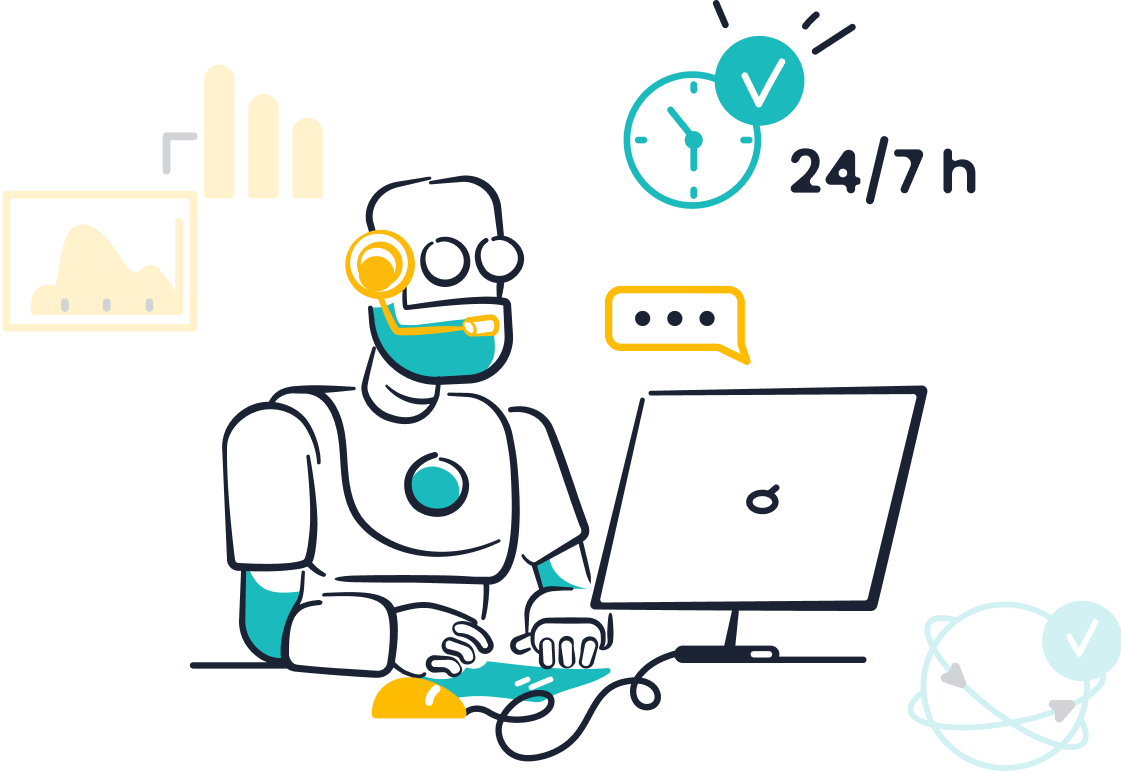
Identifying Pain Points in Customer Interactions
Understanding what frustrates your customers is the first step to improving customer service. Common pain points include long waiting times, unhelpful responses, and complicated website navigation. For instance, customers waiting over 30 minutes on hold often lose patience, leading to dissatisfaction. Similarly, unclear product descriptions or poor-quality items can erode trust. A smartwatch with misleading battery life claims, for example, can leave buyers feeling deceived.
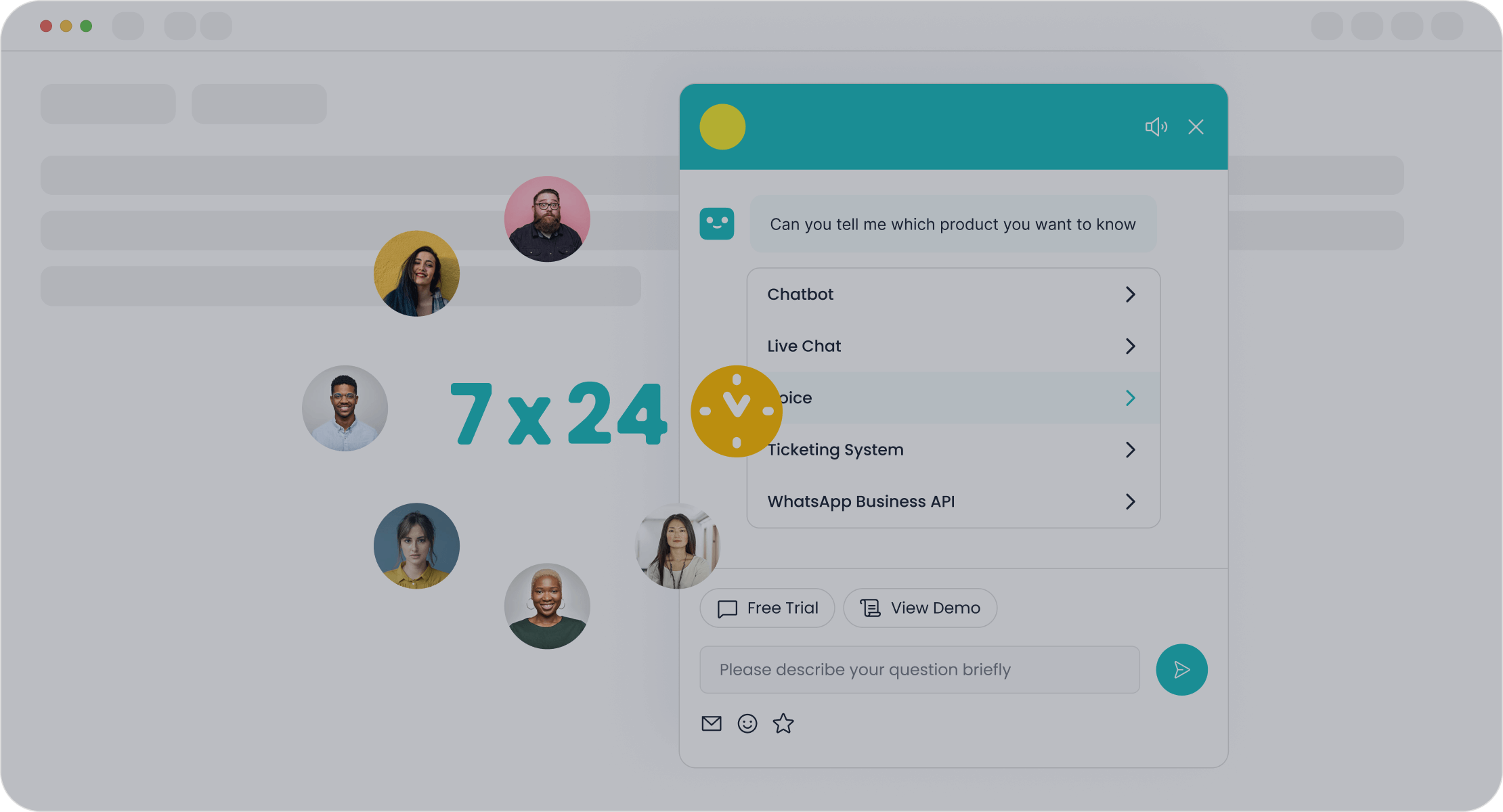
Addressing these issues can significantly enhance satisfaction. Studies show that 88% of customers are more likely to return after a positive service experience. Chatbots like Sobot’s AI Chatbot can help by identifying recurring complaints through sentiment analysis. This allows you to adjust responses and improve interactions. Additionally, chatbots can handle FAQs and basic troubleshooting, reducing the need for live agents and ensuring faster resolutions.
By focusing on these pain points, you can create a smoother, more enjoyable experience for your customers.

Recognizing the Role of Urgency in Customer Service
Customers value quick responses. In fact, 80% of them consider the service experience as important as the product itself. When issues arise, they expect immediate solutions. Delays can lead to frustration and even lost business. For example, 60% of consumers stop engaging with a brand if they find the service unfriendly or slow.
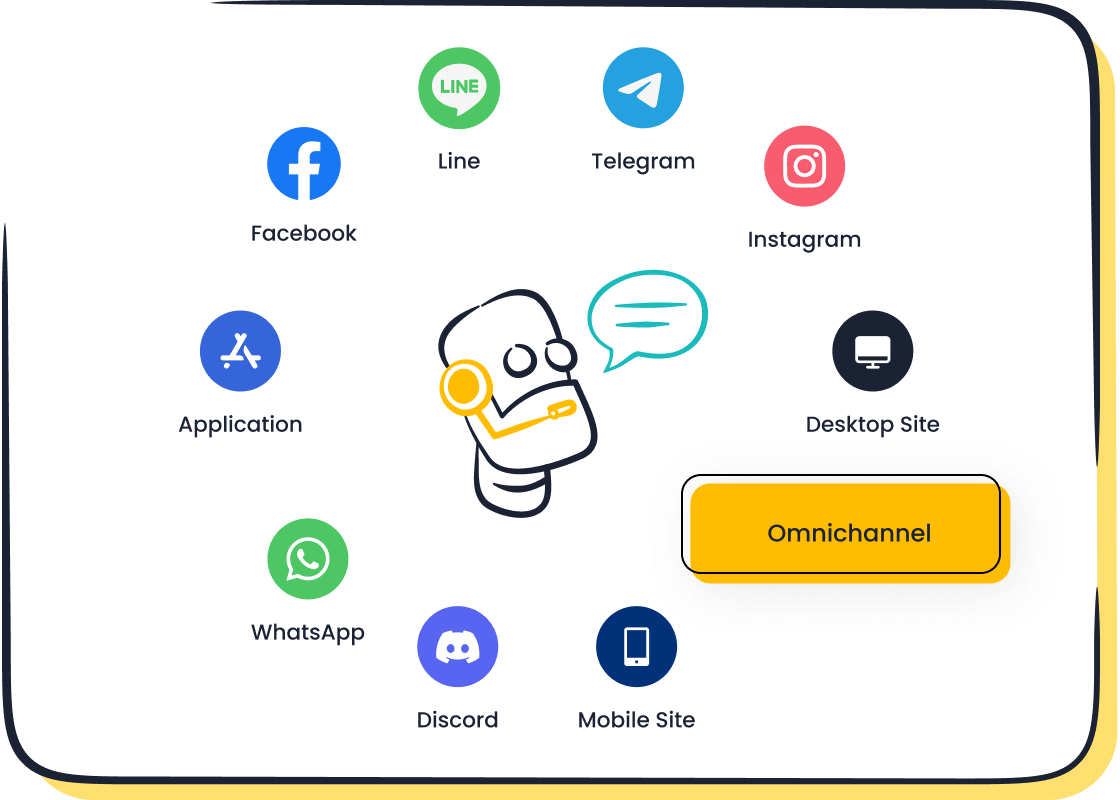
Sobot’s Chatbot addresses this need for urgency by providing 24/7 support. It operates across multiple channels, including WhatsApp and SMS, ensuring customers receive timely assistance. By automating repetitive tasks, the chatbot reduces waiting times and allows human agents to focus on complex queries. This balance between speed and quality ensures a seamless experience.
Recognizing urgency not only improves satisfaction but also builds trust. Customers who feel valued are more likely to recommend your brand, driving positive word-of-mouth marketing.
Mapping Customer Journeys to Anticipate Expectations
Mapping the customer journey helps you understand their needs at every stage. This involves gathering and analyzing data, creating buyer personas, and optimizing touchpoints. For example, Amazon excels at this by offering personalized recommendations and one-click purchasing. These features simplify the buying process and enhance the overall experience.
Sobot’s AI solutions can assist in mapping journeys by integrating data from various channels. This provides a unified view of customer interactions, helping you predict their expectations. For instance, if a customer frequently asks about a product feature, the chatbot can proactively provide detailed information. This not only saves time but also improves satisfaction.
By anticipating needs, you can deliver tailored experiences that resonate with your audience. Studies reveal that 80% of consumers are more likely to purchase when brands offer personalized services. This approach not only boosts loyalty but also sets your business apart in a competitive market.
Optimizing Chatbot Functionality with Sobot
Leveraging Quick Links and Predefined Responses
Quick links and predefined responses are essential tools for improving chatbot efficiency. These features allow chatbots to provide instant answers to common queries, reducing response times and enhancing customer satisfaction. For example, when customers ask about shipping policies or return procedures, quick links can direct them to relevant pages instantly. Predefined responses ensure consistent and accurate answers, especially for FAQs like "What are your business hours?" or "How do I track my order?"
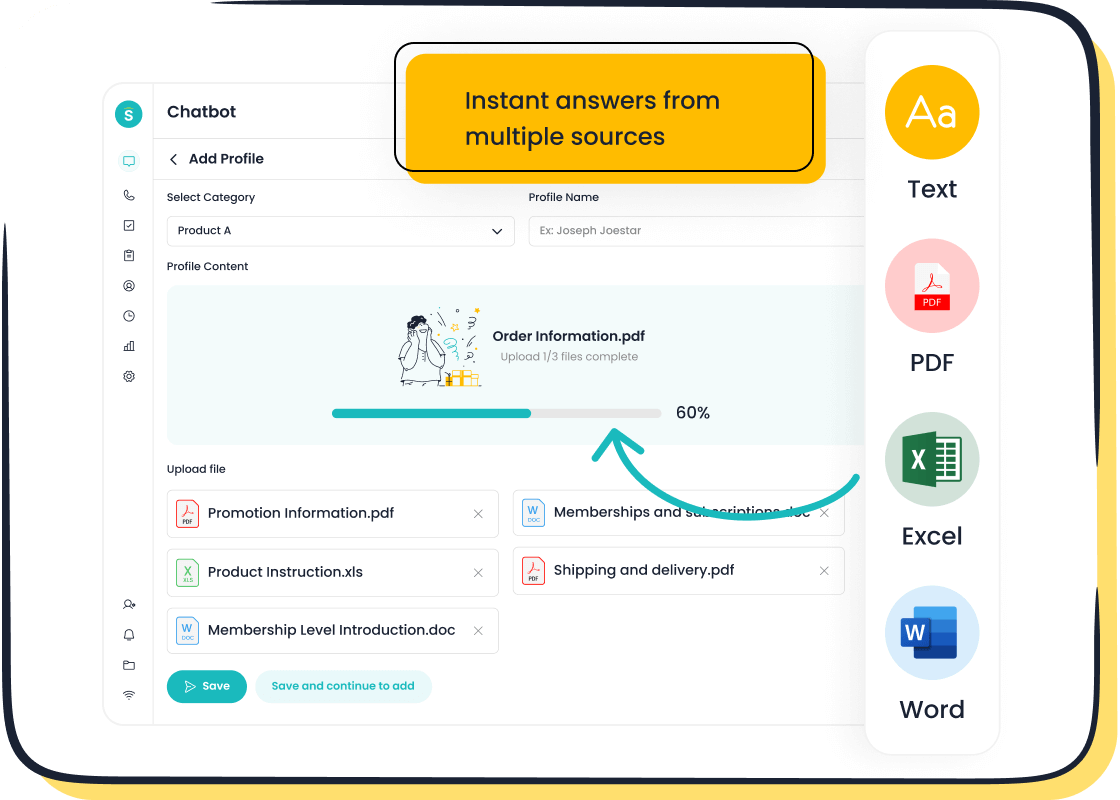
Sobot’s Chatbot excels in leveraging these functionalities. Its intuitive interface lets you create predefined responses without coding, making it easy to customize answers for your audience. The chatbot also integrates seamlessly with omnichannel platforms like WhatsApp and SMS, ensuring quick links are accessible across multiple communication channels.
Performance metrics validate the effectiveness of these features. For instance, resolution rates measure how many queries are solved without human intervention, while customer satisfaction scores highlight the chatbot’s impact on user experience. Below is a table summarizing key metrics:
| Metric | Description |
|---|---|
| Lead Generation Rate | Indicates the effectiveness of the chatbot in capturing user information through engaging interactions. |
| Resolution Rate | Measures the percentage of queries resolved without human intervention, reflecting chatbot efficiency. |
| Customer Satisfaction Score | Assesses user satisfaction with the chatbot's performance, highlighting areas for improvement. |
| Fallback Rate | Tracks instances where the chatbot fails to understand user input, indicating potential knowledge gaps. |
| Human Handoff Rate | Measures how often conversations are escalated to human agents, indicating the chatbot's limitations. |
| Return on Investment (ROI) | Evaluates the financial benefits of the chatbot compared to its costs, assessing overall effectiveness. |
By leveraging quick links and predefined responses, you can streamline customer interactions and improve service delivery.
Enhancing AI Capabilities for Dynamic Learning
Dynamic learning enables chatbots to adapt and improve over time. This capability allows chatbots to analyze past interactions, identify patterns, and refine their responses. For example, if customers frequently ask about a new product feature, the chatbot can learn to provide detailed answers proactively.
Sobot’s Chatbot incorporates advanced AI capabilities to support dynamic learning. It uses a robust knowledge base built from articles, PDFs, and text snippets to deliver accurate replies. The chatbot also employs generative AI powered by large language models (LLMs), ensuring continuous improvement in understanding and responding to customer queries.
Case studies highlight the impact of dynamic learning. For instance, Ivy Tech’s AI-driven pilot program identified at-risk students and provided targeted interventions, leading to a 98% improvement in grades. Similarly, Canterbury High School implemented AI-powered feedback systems, enabling instant analysis of assignments and enhancing student outcomes. These examples demonstrate how dynamic learning can optimize performance and deliver personalized experiences.
With Sobot’s dynamic learning capabilities, you can ensure your chatbot evolves alongside customer needs, providing smarter and more effective solutions.
Designing Chatbots for Empathy and Conversational Engagement
Empathy and conversational engagement are critical for building trust and satisfaction. Chatbots designed with a human-like communication style can foster positive interactions, even during service failures. For example, a chatbot that uses humor or warmth can defuse frustration and create a more enjoyable experience.
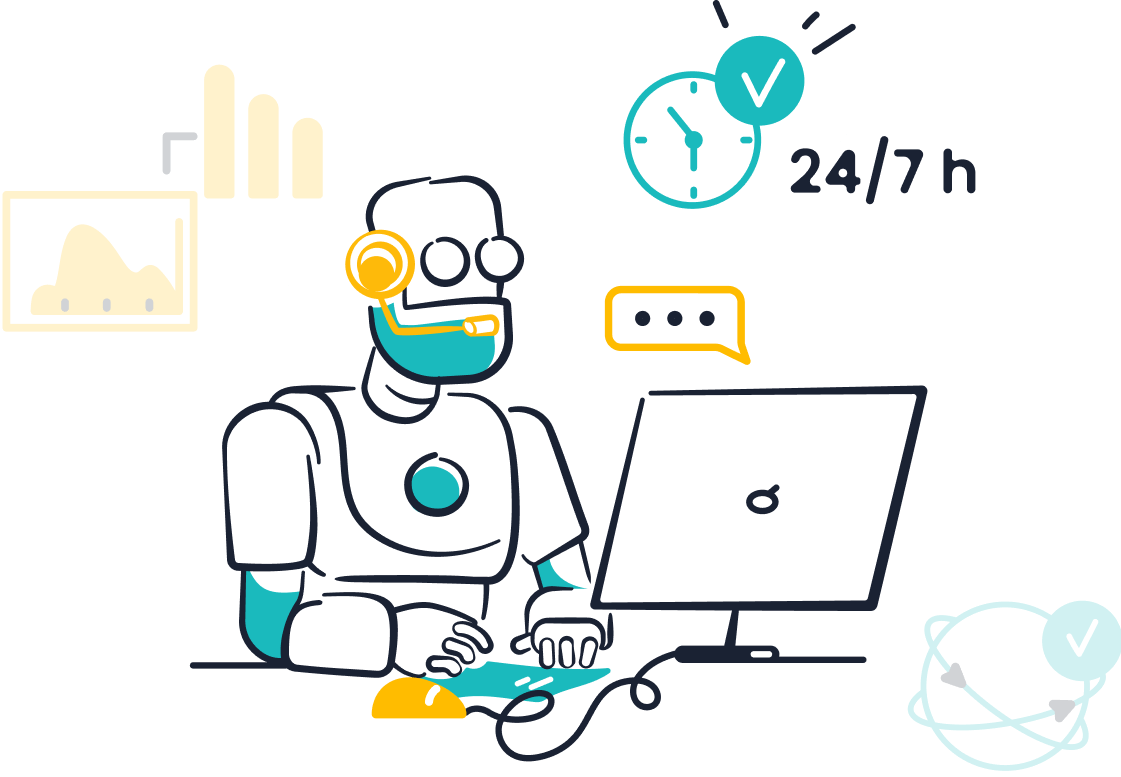
Sobot’s Chatbot prioritizes empathy in its design. It uses AI to simulate conversational engagement, ensuring responses feel natural and relatable. The chatbot’s multilingual capabilities allow it to connect with customers in their preferred language, further enhancing the sense of personalization.
Research supports the effectiveness of empathetic chatbots. Studies show that chatbots exhibiting warmth and social communication styles significantly improve user satisfaction and brand likability. For instance, a chatbot that acknowledges a customer’s frustration with phrases like “I understand how you feel” can turn a negative experience into a positive one.
By designing chatbots for empathy, you can strengthen customer relationships and differentiate your brand in a competitive market.
Seamless Human-Bot Collaboration in Customer Service
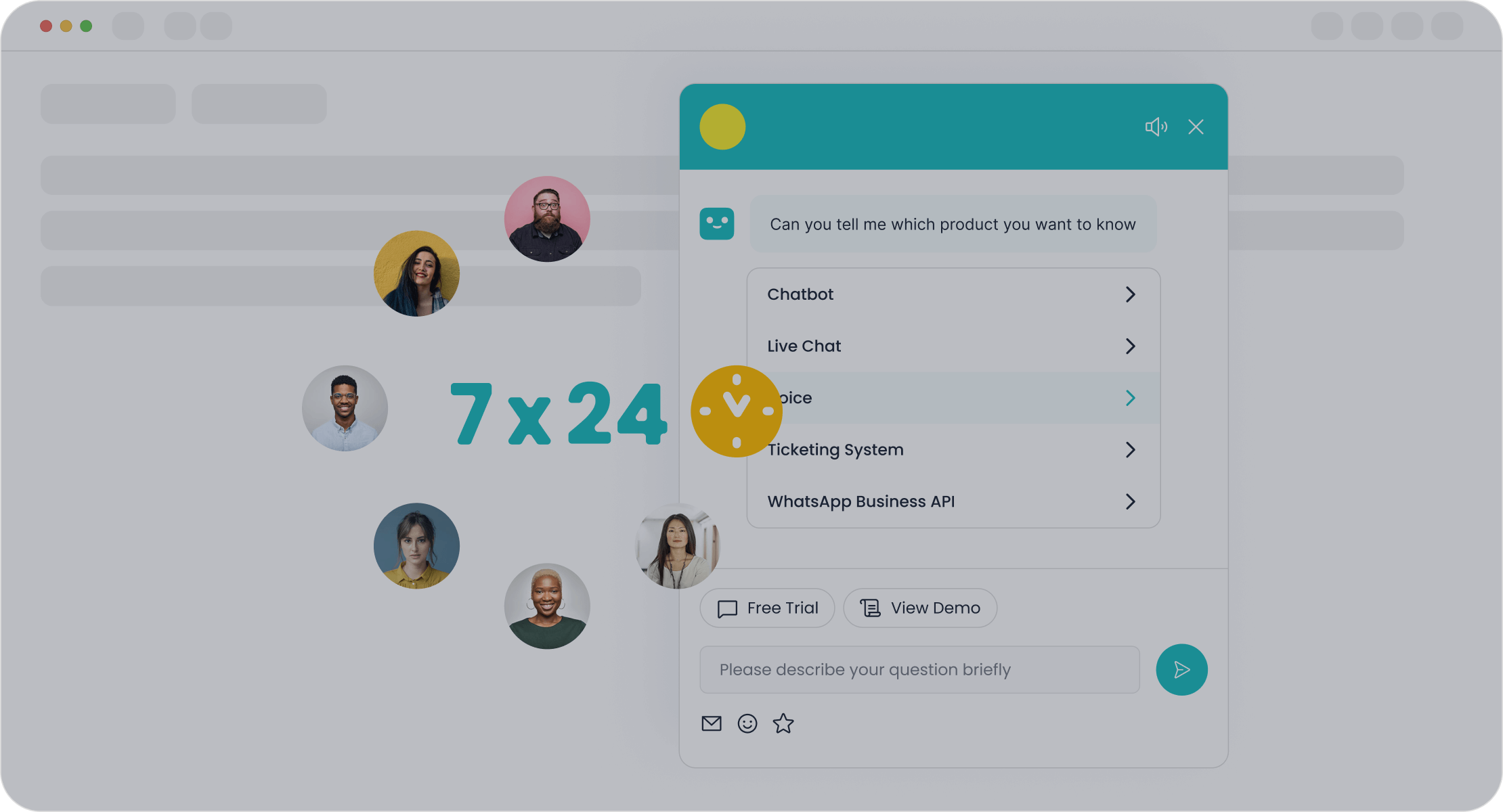
Ensuring Smooth Transitions Between Chatbots and Agents
A seamless transition between chatbots and human agents is essential for delivering exceptional customer service. When a chatbot encounters a complex query, it should transfer the conversation to a human agent without disrupting the flow. This ensures the customer doesn’t need to repeat their issue, saving time and reducing frustration.
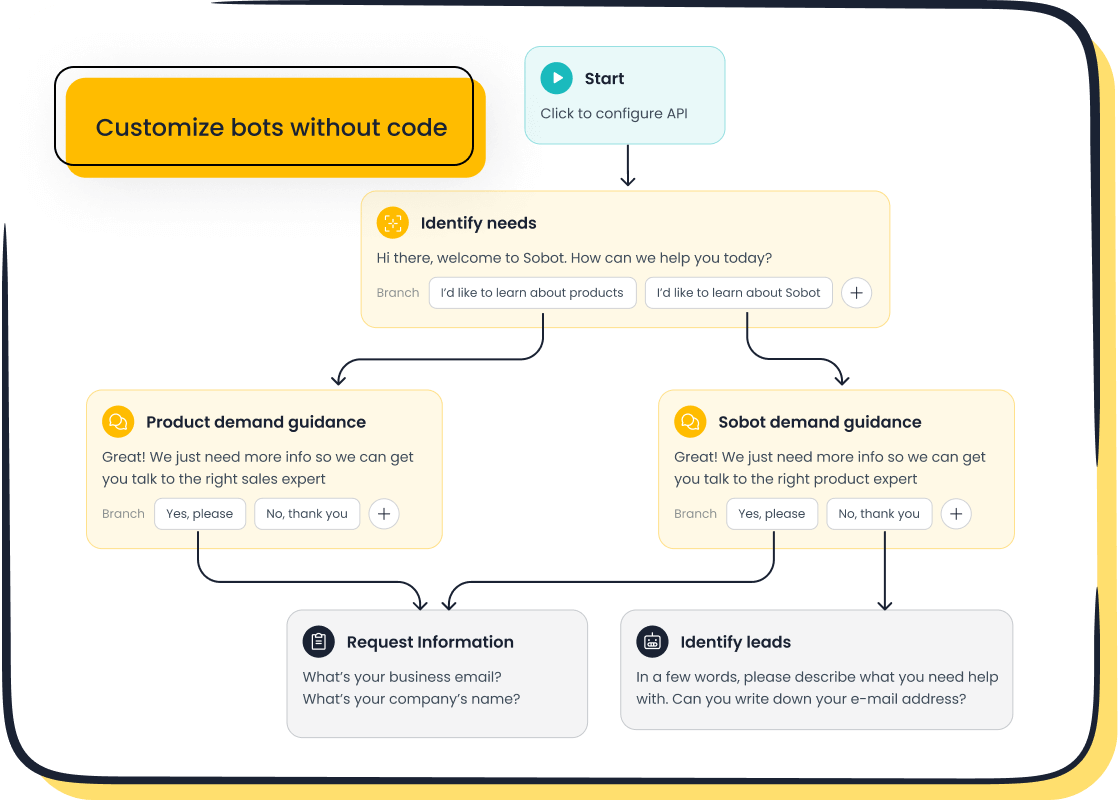
Sobot’s Chatbot excels in this area by providing agents with full conversation histories during handovers. This feature allows agents to pick up where the chatbot left off, maintaining continuity and improving the overall experience. For example, if a customer asks about a product warranty and the chatbot cannot provide a detailed answer, the query is escalated to an agent with all prior context intact.
Smooth transitions also improve response times. Chatbots handle repetitive tasks like ticket routing and data entry, freeing agents to focus on more complex issues. This collaboration leads to faster resolutions and higher satisfaction rates.
Maintaining Context During Handovers
Maintaining context during handovers is critical for effective customer service. Customers expect personalized interactions, and losing context can lead to dissatisfaction. Sobot’s Chatbot ensures context retention by storing and sharing conversation details with human agents.
Unlike traditional chatbots, which often struggle with memory, Sobot’s AI-powered solution retains deep context. For instance, if a customer inquires about a delayed shipment, the chatbot can pass along details like order numbers and previous interactions. This eliminates the need for customers to repeat themselves, creating a smoother experience.
By preserving context, you can build trust and loyalty. Customers appreciate when their concerns are addressed efficiently, and this approach demonstrates your commitment to their satisfaction.
Training Teams to Work Alongside Sobot's Chatbot
To maximize the benefits of human-bot collaboration, training your team is essential. Agents should understand how to use Sobot’s Chatbot effectively and leverage its features to enhance customer service.
Start by familiarizing your team with the chatbot’s capabilities, such as its ability to handle FAQs and escalate complex queries. Conduct role-playing exercises to simulate real-world scenarios, helping agents practice smooth handovers. Additionally, encourage agents to provide feedback on the chatbot’s performance. This input can help refine its responses and improve its effectiveness over time.
Well-trained teams can work alongside chatbots to deliver faster, more personalized service. This collaboration not only boosts efficiency but also ensures your customers feel valued and supported.
Personalization and Advanced Features in Chatbots
Delivering Tailored Experiences Using Customer Data
Personalization transforms how you interact with customers. By leveraging customer data, chatbots can deliver tailored experiences that meet individual needs. For instance, Sephora uses AI-powered chatbots to provide personalized product suggestions and virtual consultations. These features enhance customer satisfaction and loyalty.

Sobot’s Chatbot excels in this area by integrating data from various channels. It analyzes customer preferences and past interactions to offer personalized assistance. For example, if a customer frequently inquires about skincare products, the chatbot can proactively recommend related items or promotions. This approach not only saves time but also creates a more engaging experience.
Studies show that AI-driven segmentation improves customer satisfaction and loyalty. The table below highlights key findings:
| Study Title | Key Findings |
|---|---|
| AI Customer Segmentation | AI-driven segmentation enhances personalized interactions and loyalty. |
| Personalization at Scale | Sephora uses AI chatbots for tailored suggestions, improving customer experience. |
| The Rise of Personalization | Chatbots gather data to provide personalized assistance and improve efficiency. |
By using customer data effectively, you can create meaningful interactions that resonate with your audience.
Building Rapport Through Personalized Messaging
Building rapport with customers requires a personal touch. Chatbots designed for personalized messaging can reference past interactions, suggest relevant services, and even offer exclusive deals. For example, a chatbot might recommend local attractions based on a customer’s location or follow up with a post-purchase check-in.
Sobot’s Chatbot takes this further by using multilingual capabilities and contextual conversations. It remembers details like order history or preferences, making interactions feel more human. For instance, if a customer previously purchased a laptop, the chatbot can suggest compatible accessories or software.
Metrics like retention rate and customer satisfaction score highlight the impact of personalized messaging. Engaged users often return to the chatbot, reflecting improved loyalty. Consistent support and instant query resolution also enhance the overall experience.
By focusing on personalized messaging, you can strengthen relationships and foster long-term loyalty.
Offering Priority Support for High-Value Customers
High-value customers expect exceptional service. Offering priority support ensures their needs are met promptly. Chatbots can identify these customers based on purchase history or loyalty status and provide faster resolutions.
Sobot’s Chatbot enables you to prioritize high-value customers effortlessly. It uses advanced AI to segment users and allocate resources efficiently. For example, VIP customers might receive instant responses or access to exclusive support channels. This level of personalized assistance demonstrates your commitment to their satisfaction.
Customized promotions and priority handling not only improve customer retention but also encourage repeat purchases. By investing in priority support, you can enhance the experience for your most valuable customers and drive business growth.
Measuring and Improving Chatbot Performance
Tracking Key Metrics for Customer Service Success
Tracking performance metrics helps you understand how well your chatbot supports customer service. Key metrics provide insights into user behavior, satisfaction, and areas for improvement. For example, "User Engagement" measures how many customers interact with the chatbot, while "Goal Completion Rate" (GCR) shows how effectively the chatbot helps users achieve their objectives.
Here’s a table summarizing essential metrics:
| Metric | Description |
|---|---|
| User Engagement | The percentage of users who interacted with the chatbot. |
| Goal Completion Rate (GCR) | A percentage-based metric indicating how many users achieved their intended goals through the chatbot. |
| Customer Satisfaction Score | A score reflecting the percentage of users who found the chatbot useful, often measured by CSAT/NPS. |
| Chat Transfer | The percentage of interactions transferred to a human agent. |
| Captured Leads | The number of visitors who provided contact information during their interaction with the chatbot. |
Sobot’s Chatbot tracks these metrics through its advanced reporting tools. By analyzing data like daily conversation volumes and bounce rates, you can identify trends and optimize the chatbot’s performance. This ensures your customers receive a seamless experience.
Gathering Feedback to Enhance Chatbot Effectiveness
Feedback is essential for improving your chatbot. You can collect it through various methods:
- Surveys and Polls: Ask users about their experience to understand satisfaction levels.
- User Analytics: Review interaction data to identify patterns and gaps.
- Direct Feedback Channels: Allow customers to share real-time feedback during chats.
- Social Media Monitoring: Track mentions to gauge sentiment.
Sobot’s Chatbot integrates with feedback tools to simplify this process. For instance, it can analyze customer sentiments over time and segment data for targeted insights. This helps you make informed decisions to enhance the chatbot’s effectiveness.
Regularly Updating Sobot's Chatbot for Optimal Results
Regular updates keep your chatbot relevant and efficient. Customer needs evolve, and your chatbot must adapt to meet them. Sobot’s Chatbot uses a point-and-click interface, making updates easy without coding. You can add new FAQs, refine workflows, or expand its knowledge base using articles and PDFs.
For example, if your business launches a new product, updating the chatbot ensures it can answer related queries. Regular updates also reduce fallback rates, improving customer satisfaction. By keeping the chatbot current, you maintain its value as a reliable customer service tool.
Improving customer service with chatbots requires a strategic approach. You can start by addressing customer pain points, optimizing chatbot functionality, and ensuring seamless collaboration between bots and agents. Personalization and advanced features also play a vital role in enhancing user satisfaction.
Balancing automation with human interaction is equally important. While chatbots provide instant responses and handle repetitive tasks, human agents excel at managing complex issues with empathy and critical thinking. A hybrid model ensures customers receive timely assistance and personalized care.
Sobot's Chatbot delivers measurable results, including a 96% positive feedback rate and a 97% customer satisfaction score. Its ability to reduce inbound discussion volume by 20% and resolve 22.2% of self-service questions highlights its operational efficiency.
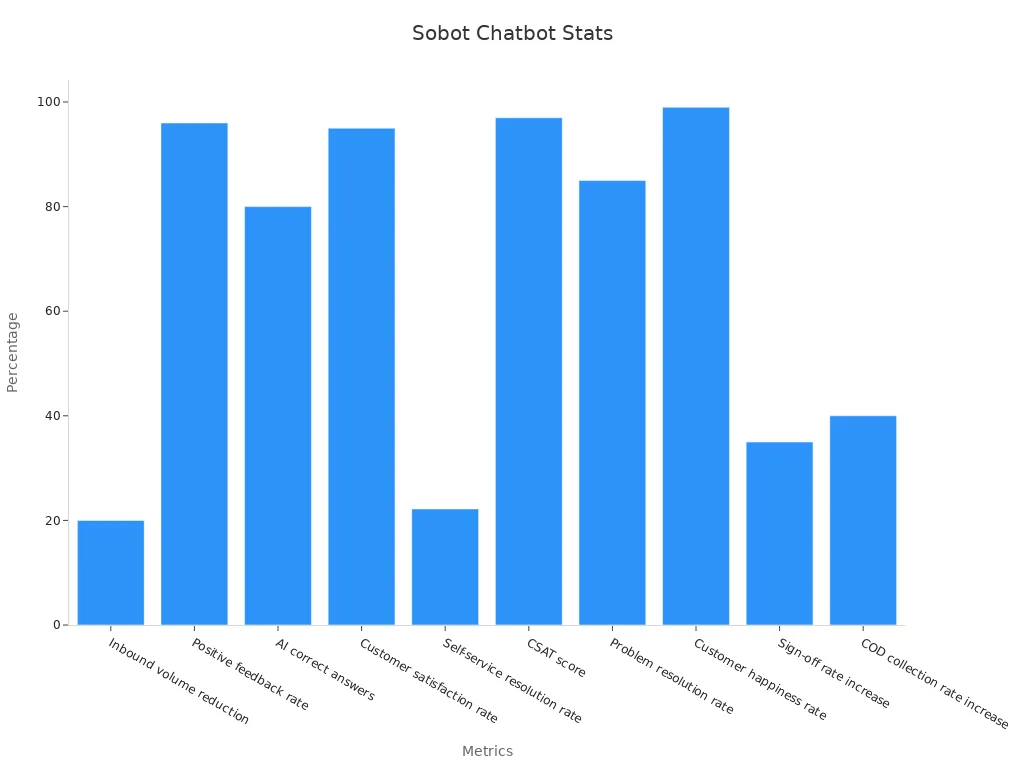
Adopting Sobot's Chatbot can transform your customer service. It combines cutting-edge AI with user-friendly features to enhance satisfaction and operational efficiency. By leveraging this tool, you can build stronger relationships and stay ahead in a competitive market.
FAQ
What is the primary benefit of using chatbots for customer service?
Chatbots improve efficiency by handling repetitive tasks and providing instant responses. They operate 24/7, ensuring customers receive uninterrupted support. This reduces waiting times and enhances satisfaction, making your service more reliable and accessible.
How does Sobot’s Chatbot ensure personalized customer service?
Sobot’s Chatbot uses customer data to tailor interactions. It remembers preferences, past inquiries, and purchase history. This allows it to provide relevant recommendations and solutions, creating a more engaging and personalized service experience.
Can chatbots replace human agents entirely?
No, chatbots complement human agents by managing routine queries. They free up agents to focus on complex issues requiring empathy and critical thinking. This collaboration ensures a balanced and effective customer service approach.
How does Sobot’s Chatbot handle multilingual customer service?
Sobot’s Chatbot supports multiple languages, enabling it to communicate with customers in their preferred language. This feature ensures inclusivity and enhances the quality of service for a diverse audience.
What metrics should you track to measure chatbot performance?
Key metrics include resolution rate, customer satisfaction score, and fallback rate. These indicators help you evaluate how well the chatbot supports your service goals and identify areas for improvement.
See Also
Enhancing Customer Satisfaction Through E-commerce Chatbots
Ten Strategies to Improve Live Chat Customer Experience
Simple Ways to Integrate Chatbots on Your Website
